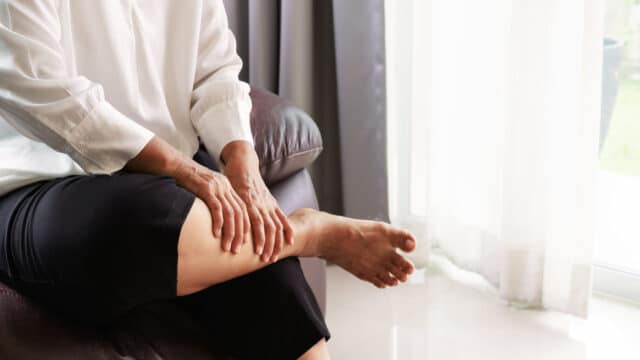Arterial vs. Venous Ulcers
There are two types of chronic wounds often associated with cardiovascular conditions: arterial ulcers, also called ischemic ulcers, and venous ulcers, also called stasis ulcers. For people living with heart disease, both arterial and venous ulcers can form when a bruise or scrape worsens or when the skin breaks down due to poor blood supply.
Arterial ulcers and venous ulcers are commonly misdiagnosed because both are most often found on the lower legs and feet. Both wounds most often form as a result of a minor injury, such as a stubbed toe or bruised leg. It is important to understand the differences between arterial and venous ulcers because these wounds require specialized care to heal.
Arterial or Ischemic Ulcers
Arterial ulcers occur when the affected area does not receive enough blood supply. The medical term for poor blood flow is ischemia therefore these wounds are also called ischemic ulcers. They are most often found on the toes, feet, heels or ankles.
Characteristics of Arterial or Ischemic Ulcers Can Include:
- Pain, which may worsen when the leg is elevated
- Shiny or tight, hairless skin
- Skin that is cool or cold to the touch
- Minimum drainage from the wound
- A round wound with even edges or the look of being punched out
Venous Stasis Ulcers
Venous ulcers occur when blood pools in the veins due to valves that fail to push the blood back up to the heart. The medical term for poor blood circulation is stasis therefore these wounds are also called venous stasis ulcers. They are most often found just above the ankle.
Characteristics of Venous or Stasis Ulcers Can Include:
- Leg pain or achiness
- Swelling in the leg, especially at the end of the day
- Discolored skin in the area above the ankle
It is important to check your lower legs, ankles, feet and toes for wounds daily, especially if you are living with some form of heart disease. Take off your shoes at every healthcare appointment and ask your healthcare provider to examine your lower legs, feet and toes for wounds and potential problem areas.
If you or someone you care for has a wound that is not healing, find a Center near you today.


